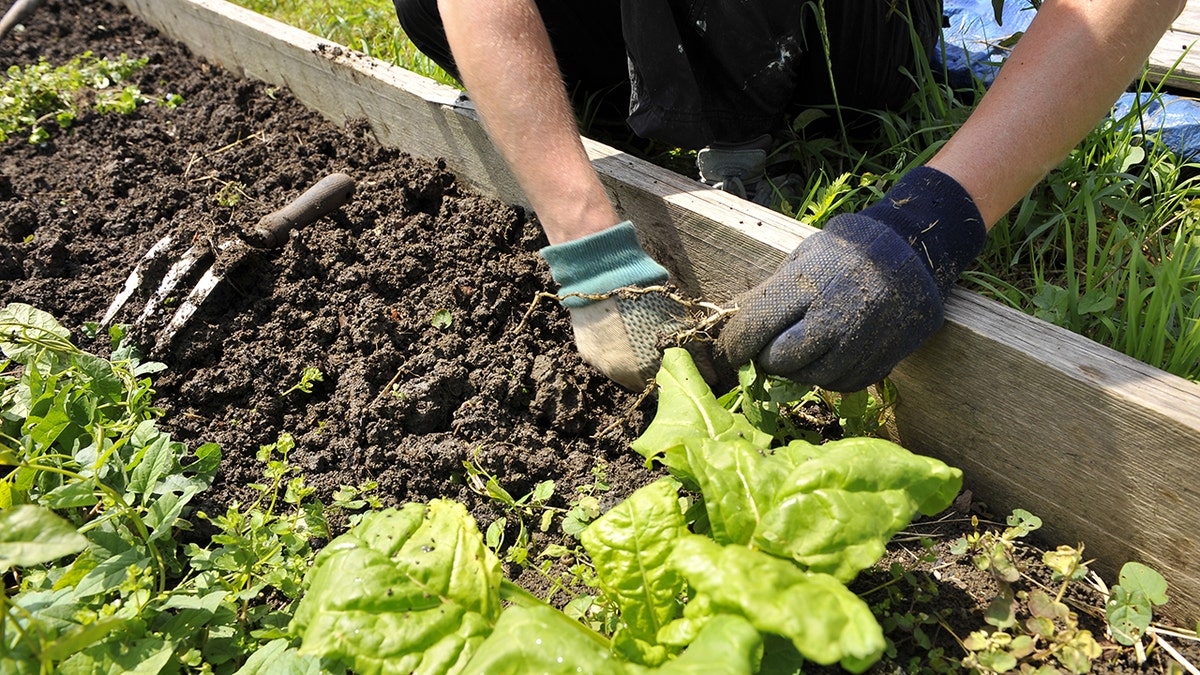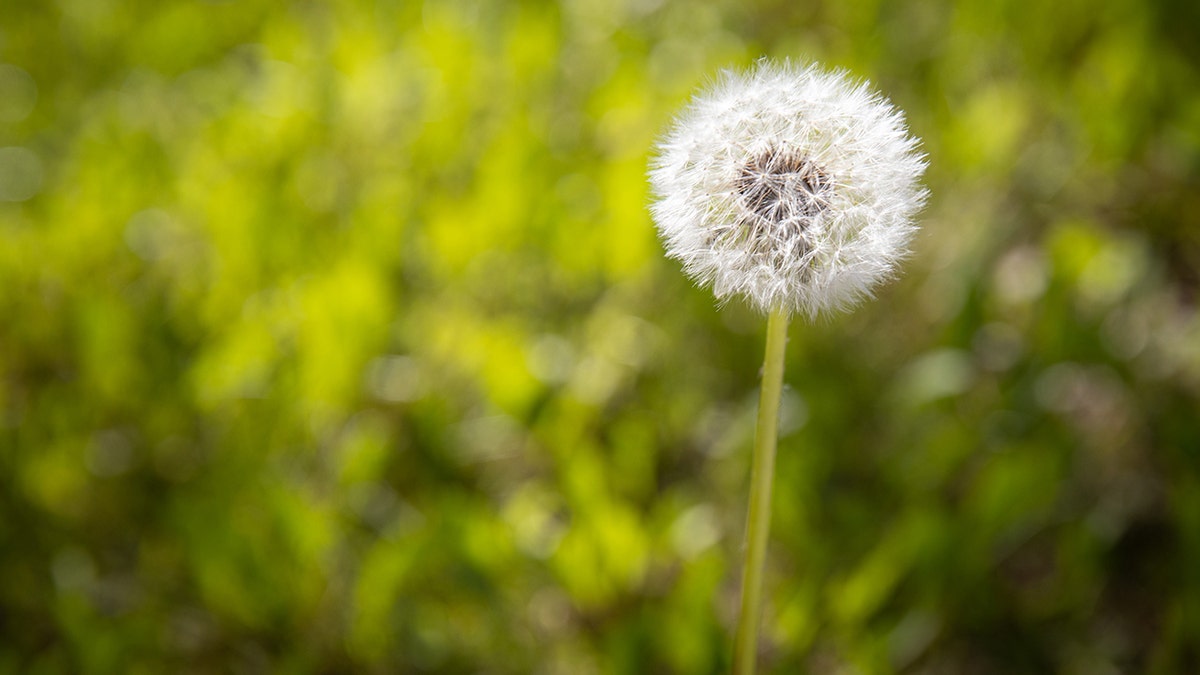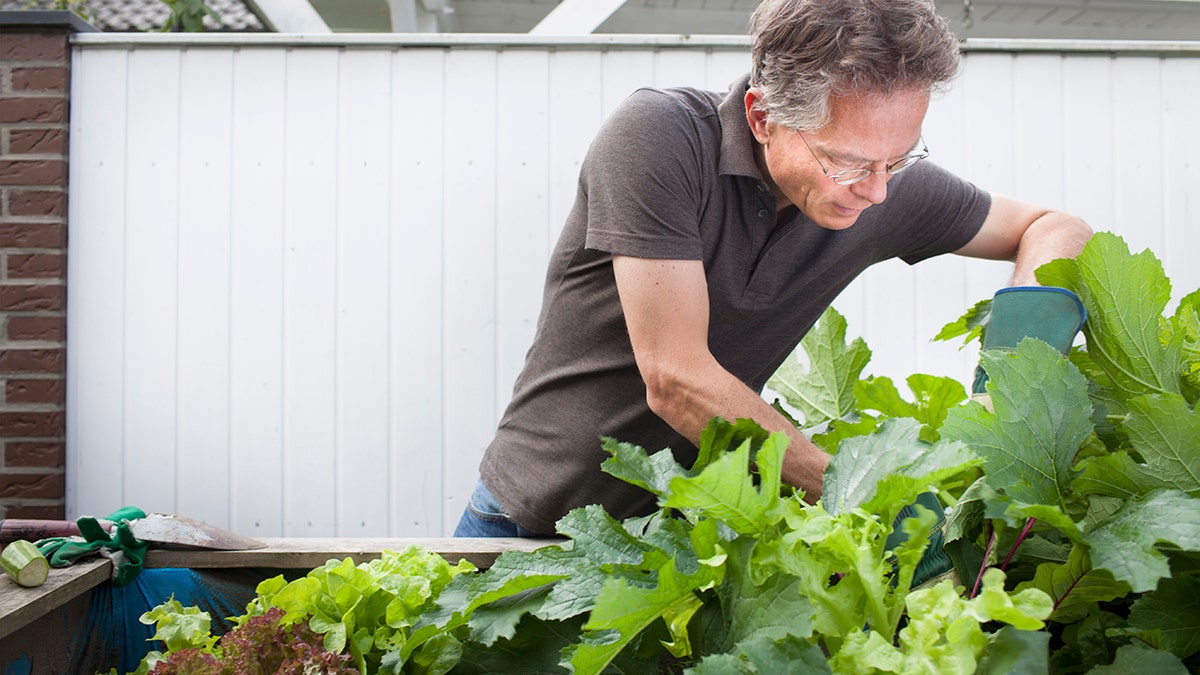Benefits of adding bonsai plants to your garden
Bonsai plants can improve air purification, and regulate temperature and humidity as well. Matt Puntigam joins Fox & Friends to teach the anchors how to prune a bonsai plant.
Weeds can be detrimental to an otherwise flourishing garden.
Weeds are considered undesired plants that grow in unwanted locations.
Luckily, not all weeds are harmful to other plants, but some can be.
It's a valuable skill to be able to identify weeds and remove them early, before it is too late.
6 REASONS WHY YOUR GARDEN HAS WEEDS
In addition to being able to identify weeds, you can take steps to help prevent them from growing in order to keep a healthy garden this summer.
Check out this handy list and helpful information.

Weeds can cause a lot of damage to other plants in your garden. (Ben Birchall - PA Images/PA Images via Getty Images)
- What are variations of garden weeds?
- How do I identify common garden weeds?
- How do I get rid of garden weeds?
1. What are variations of garden weeds?
There are many types of garden weeds. Some weeds are annual, while others are perennial and can come back year after year.
For a lot of weeds, the most recognizable issue for gardens is how they take resources, such as sunlight and water, away from other plants — making it harder for those more desired plants to grow.
One common weed that grows in gardens are dandelions. Though dandelions aren't extremely harmful to plants, they are considered weeds because of how much they spread from wind scattering their seeds.
Dandelions aren't hard to spot. Typically, you'll find they're plentiful outside, so they can sometimes overtake a garden.
The flower of the chickweed is small and white, typically with five petals surrounding it.
Purslane weeds are also rapid growers. The plant is green and has small, oval-like leaves. While purslane doesn't directly harm other plants, they take up a lot of space in a garden and reduce resources to your desired plants.
GARDENING FOR ADVANCED GROWERS: 10 TIPS FOR GROWING YOUR OWN VEGETABLE GARDEN
Chickweeds are yet another weed to be cautious of in the garden. The flower of the chickweed is small and white, typically with five petals surrounding it. Like dandelions and purslane, this annual weed competes with your garden flowers to maintain life.

Dandelions grow fast and can quickly spread throughout your garden. (Omer Taha Cetin/Anadolu Agency via Getty Images)
Another common weed is plantain weeds. They are green with long, oval-shaped leaves. If not properly maintained, this weed could become the unwanted star of your garden.
Crabgrass looks like long strands of grass that grow in gardens and throughout your lawn. If you've ever seen a green weed growing through the cracks of pavement, it was likely crabgrass.
It is an unattractive weed that can be unhealthy for the rest of your lawn.
Nutsedge is a weed that looks fairly similar to crabgrass and can be found in your garden or throughout your lawn.
Creeping Charlie (or ground-ivy) are small but invasive weeds that can pop up throughout your garden. The leaves of this plant look like tiny little clovers.
Other weeds you may see throughout your yard are yellow wood sorrel, ragweed, pigweed, quackgrass, Canada thistle, bindweed and white clover.

Chickweed has little white flowers with petals surrounding it. (Bildagentur-online/Universal Images Group via Getty Images)
2. How do I identify common garden weeds?
Some weeds are difficult to identify as their features are similar. Other weeds, such as dandelions, are distinct and easier to spot.
When trying to identify a weed, pay attention to the leaf shapes and their arrangement on a plant and the flower's shape and color.
When you pull a weed, examine the roots and their formation. Note how often and how quickly they grow. By acknowledging these characteristics, you can better understand what to look for in a book or blog about weeds.
CLICK HERE TO SIGN UP FOR OUR LIFESTYLE NEWSLETTER
If you're seeking an even quicker way to identify weeds, download an app like PictureThis, snap a photo of the plant in question and allow the app to identify it for you.
3. How do I get rid of garden weeds?
How you remove garden weeds is going to differ depending on the weed type.
Make sure to pull the weed all the way down to the root. If you simply pull the visible part of the weed, it is going to grow again.

Plucking out weeds from the root as soon as they are spotted can prevent them from spreading. (Ute Grabowsky/Photothek via Getty Images)
Additionally, keep in mind that it is easier to pull weeds when soil is moist.
If possible, wait until a rainy day, or after you’ve watered to remove pesky plants from your garden with ease.
CLICK HERE TO GET THE FOX NEWS APP
A lot of weeds can be pulled out with your hands; but for those more challenging plants to remove, you may need a weeding tool.
Make sure to keep an eye on your garden and frequently check for weeds as they can grow fast.
Tips for avoiding the rapid growth of weeds include applying weed-free mulch, cleaning your garden tools regularly, and using landscape fabric or a spot treatment.

